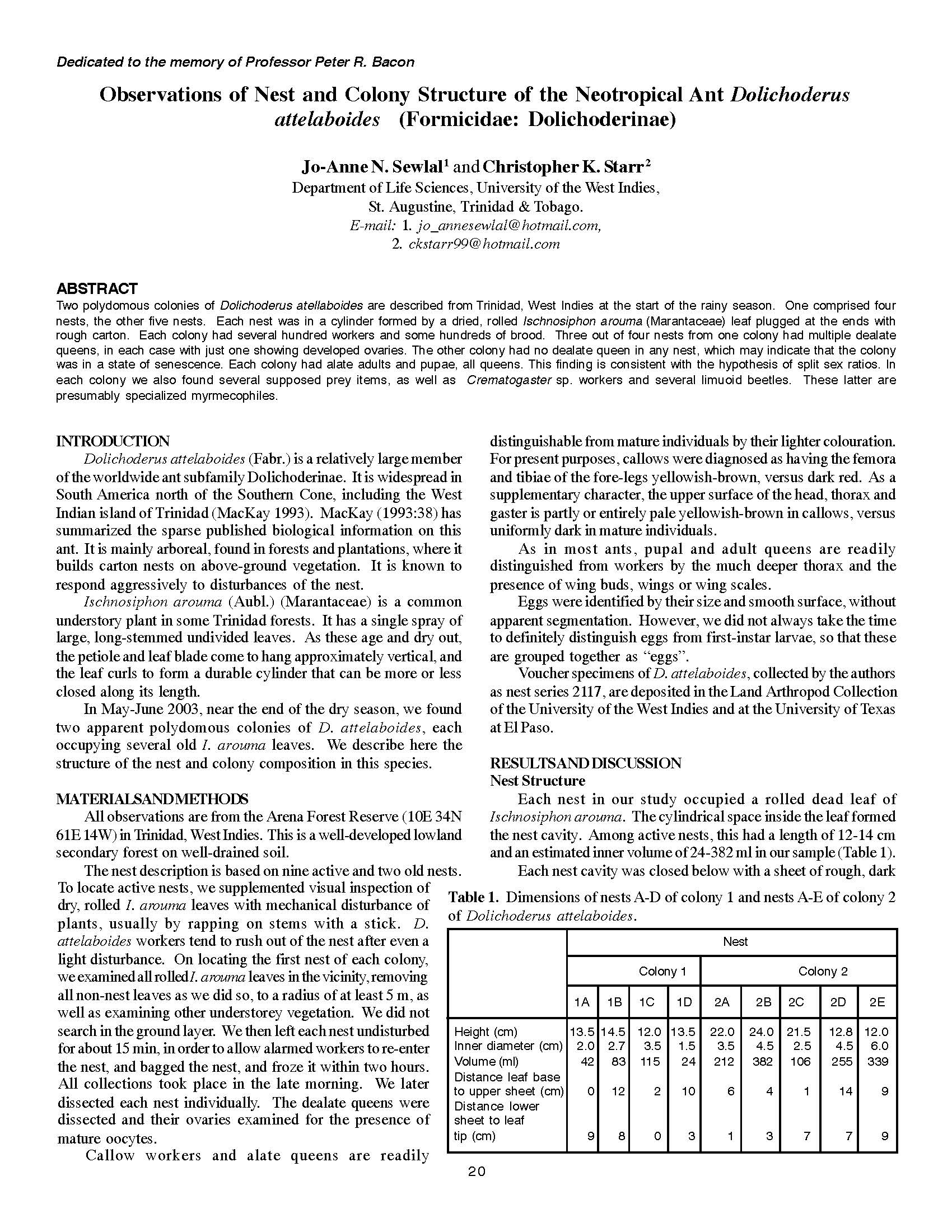Observations of Nest and Colony Structure of the Neotropical Ant Dolichoderus attelaboides
Keywords:
Myrmecology, Neotropical Ant, Dolichoderus atellaboides, Ant colony, Ant nest, Polydomous Colonies, Arena Forest, Ant nestingAbstract
Two polydomous colonies of Dolichoderus atellaboides are described from Trinidad, West Indies at the start of the rainy season. One comprised four nests, the other five nests. Each nest was in a cylinder formed by a dried, rolled Ischnosiphon arouma (Marantaceae) leaf plugged at the ends with rough carton. Each colony had several hundred workers and some hundreds of brood. Three out of four nests from one colony had multiple dealate queens, in each case with just one showing developed ovaries. The other colony had no dealate queen in any nest, which may indicate that the colony was in a state of senescence. Each colony had alate adults and pupae, all queens. This finding is consistent with the hypothesis of split sex ratios. In each colony we also found several supposed prey items, as well as Crematogaster sp. workers and several limuoid beetles. These latter are presumably specialized myrmecophiles.

